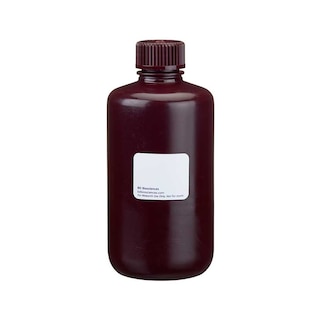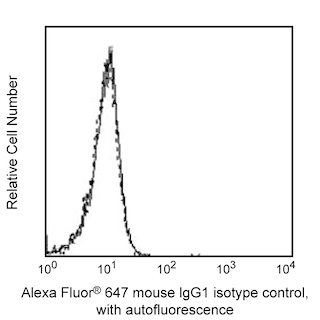-
抗体試薬
- フローサイトメトリー用試薬
-
ウェスタンブロッティング抗体試薬
- イムノアッセイ試薬
-
シングルセル試薬
- BD® AbSeq Assay | シングルセル試薬
- BD Rhapsody™ Accessory Kits | シングルセル試薬
- BD® Single-Cell Multiplexing Kit | シングルセル試薬
- BD Rhapsody™ Targeted mRNA Kits | シングルセル試薬
- BD Rhapsody™ Whole Transcriptome Analysis (WTA) Amplification Kit | シングルセル試薬
- BD Rhapsody™ TCR/BCR Profiling Assays (VDJ Assays) | シングルセル試薬
- BD® OMICS-Guard Sample Preservation Buffer
-
細胞機能評価のための試薬
-
顕微鏡・イメージング用試薬
-
細胞調製・分離試薬
-
- BD® AbSeq Assay | シングルセル試薬
- BD Rhapsody™ Accessory Kits | シングルセル試薬
- BD® Single-Cell Multiplexing Kit | シングルセル試薬
- BD Rhapsody™ Targeted mRNA Kits | シングルセル試薬
- BD Rhapsody™ Whole Transcriptome Analysis (WTA) Amplification Kit | シングルセル試薬
- BD Rhapsody™ TCR/BCR Profiling Assays (VDJ Assays) | シングルセル試薬
- BD® OMICS-Guard Sample Preservation Buffer
- Japan (Japanese)
-
Change country/language
Old Browser
Looks like you're visiting us from {countryName}.
Would you like to stay on the current country site or be switched to your country?






Comparison of GATA3 expression in human T and B cell lines. Jurkat T leukemia (ATCC TIB152, shaded histogram) and Ramos Burkitt's lymphoma (ATCC CRL-1596, open histogram) were fixed with pre-warmed BD Cytofix™ buffer (Cat. No. 554655) for 10 minutes at 37ºC, permeabilized with BD™ Phosflow Perm Buffer III (Cat. No. 558050) on ice for at least 30 minutes, and then stained with either Alexa Fluor® 647 Mouse anti-GATA3 (Cat. No. 560068/560078) or Alexa Fluor® 647 Mouse IgG1 κ Isotype control (Cat. No. 557783, not shown). The GATA3 staining on the Jurkat cell line was significantly brighter than the isotype control on Jurkat cells, while the GATA3 staining on the Ramos cells coincided very closely to its isotype control (data not shown). Thus, GATA3 expression was detected on the T cell line but not the B cell line. Flow cytometry was performed on a BD FACSArray™ bioanalyzer system.

Comparison of GATA3 expression in mouse Th2 and Th1 cell lines. D10.G4.1 Th2 lymphoblasts (ATCC TIB-224, shaded histogram) and 2D6 Th1 clone (Ahn et al, 1998, open histogram) were fixed with pre-warmed BD Cytofix™ buffer (Cat. No. 554655) for 10 minutes at 37ºC, permeabilized with BD™ Phosflow Perm Buffer III (Cat. No. 558050) on ice for at least 30 minutes, and then stained with either Alexa Fluor® 647 Mouse anti-GATA3 or Alexa Fluor® 647 Mouse IgG1 κ Isotype control (Cat. No. 557783, not shown). When compared to the respective isotype controls, the GATA3 staining on the D10.G4.1 cell line was significantly brighter than on the 2D6 cells. Flow cytometry was performed on a BD™ FACSArray™ bioanalyzer system.


BD Pharmingen™ Alexa Fluor® 647 Mouse anti-GATA3

BD Pharmingen™ Alexa Fluor® 647 Mouse anti-GATA3

Regulatory Statusの凡例
Any use of products other than the permitted use without the express written authorization of Becton, Dickinson and Company is strictly prohibited.
Preparation and Storage
推奨アッセイ手順
Either BD Cytofix™ fixation buffer or BD™ Phosflow Fix Buffer I may be used for cell fixation.
Product Notices
- This reagent has been pre-diluted for use at the recommended Volume per Test. We typically use 1 × 10^6 cells in a 100-µl experimental sample (a test).
- An isotype control should be used at the same concentration as the antibody of interest.
- Source of all serum proteins is from USDA inspected abattoirs located in the United States.
- Caution: Sodium azide yields highly toxic hydrazoic acid under acidic conditions. Dilute azide compounds in running water before discarding to avoid accumulation of potentially explosive deposits in plumbing.
- For fluorochrome spectra and suitable instrument settings, please refer to our Multicolor Flow Cytometry web page at www.bdbiosciences.com/colors.
- Alexa Fluor® 647 fluorochrome emission is collected at the same instrument settings as for allophycocyanin (APC).
- The Alexa Fluor®, Pacific Blue™, and Cascade Blue® dye antibody conjugates in this product are sold under license from Molecular Probes, Inc. for research use only, excluding use in combination with microarrays, or as analyte specific reagents. The Alexa Fluor® dyes (except for Alexa Fluor® 430), Pacific Blue™ dye, and Cascade Blue® dye are covered by pending and issued patents.
- Alexa Fluor® is a registered trademark of Molecular Probes, Inc., Eugene, OR.
- Species cross-reactivity detected in product development may not have been confirmed on every format and/or application.
- Please refer to www.bdbiosciences.com/us/s/resources for technical protocols.
関連製品






GATA3 (GATA binding protein 3) is a member of the GATA family of transcription factors. This ~50-kDa nuclear protein regulates the development and subsequent maintenance of multiple tissues. GATA3 is involved in the development of T lymphocytes (regulates T cell receptor subunit gene expression) and the differentiation of mature T cells to become Th2 cells. The expressed levels of normal or mutant GATA3 are also associated with the behaviors of various cancer cells including estrogen receptor-positive breast carcinoma cells.
The L50-823 monoclonal antibody recognizes human and mouse GATA3.
Development References (9)
-
Ahn H-J, Maruo S, Tomura M, et al. A mechanism underlying synergy between IL-12 and IFN-γ-inducing factor in enhanced production of IFN-γ. J Immunol. 1997; 159:2125-2131. (Methodology).
-
Asselin-Labat M-L, Sutherland KD, Barker H, et al. Gata-3 is an essential regulator of mammary-gland morphogenesis and luminal-cell differentiation. Nat Cell Biol. 2006; 9:201-209. (Biology).
-
Kouros-Mehr H, Slorach EM, Sternlicht MD, Werb Z. GATA-3 maintains the differentiation of the luminal cell fate in the mammary gland. Cell. 2006; 127:1041-1055. (Biology).
-
Marine J, Winoto A. The human enhancer-binding protein Gata3 binds to several T-cell receptor regulatory elements. Proc Natl Acad Sci U S A. 1991; 88(16):7284-7288. (Biology).
-
Steenbergen RDM, OudeEngberink VE, Kramer D, et al. Down-regulation of GATA-3 expression during human papillomavirus-mediated immortalization and cervical carcinogenesis. Am J Pathol. 2002; 160(6):1945-1951. (Biology). View Reference
-
Usary J, Llaca V, Karaca G, et al. Mutation of GATA3 in human breast tumors. Oncogene. 2004; 23(46):7669-7678. (Biology). View Reference
-
Yang Z, Gu L, Romeo P-H, et al. Human GATA-3 trans-activation, DNA-binding, and nuclear localization activities are organized into distinct structural domains. Mol Cell Biol. 1994; 14(3):2201-2212. (Biology). View Reference
-
Zheng W, Flavell RA. The transcription factor GATA-3 is necessary and sufficient for Th2 cytokine gene expression in CD4 T cells. Cell. 1997; 89(4):587-596. (Biology). View Reference
-
van Esch H, Groenen P, Nesbit MA, et al. GATA3 haplo-insufficiency causes human HDR syndrome. Nature. 2000; 106:419-422. (Biology). View Reference
Please refer to Support Documents for Quality Certificates
Global - Refer to manufacturer's instructions for use and related User Manuals and Technical data sheets before using this products as described
Comparisons, where applicable, are made against older BD Technology, manual methods or are general performance claims. Comparisons are not made against non-BD technologies, unless otherwise noted.
For Research Use Only. Not for use in diagnostic or therapeutic procedures.
Report a Site Issue
This form is intended to help us improve our website experience. For other support, please visit our Contact Us page.